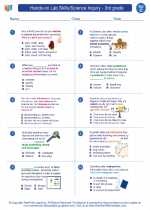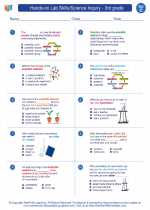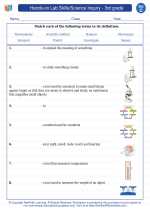Speciation
Speciation is the process by which new species evolve from existing species. It occurs when populations of a species become isolated and develop unique traits that make them reproductively incompatible with the original population. This can happen through various mechanisms such as geographical isolation, ecological isolation, or reproductive isolation.
Mechanisms of Speciation
There are several mechanisms that can lead to speciation:
- Allopatric Speciation: Occurs when populations become geographically isolated from each other, leading to genetic divergence and the formation of new species.
- Sympatric Speciation: Takes place within the same geographic area, often due to ecological factors or non-random mating.
- Parapatric Speciation: Occurs when populations are adjacent to each other and have limited interbreeding due to local adaptation or other factors.
- Peripatric Speciation: Involves a small group of individuals from a larger population becoming isolated and evolving into a new species.
Evidence of Speciation
Speciation can be inferred from various lines of evidence, including:
- Observations of physical and behavioral differences in populations
- Genetic analyses showing divergent gene pools
- Fossil records indicating the emergence of new species
Importance of Speciation
Speciation is crucial for biodiversity as it leads to the creation of new species with unique traits and adaptations. It also plays a key role in the long-term evolution of life on Earth.
Study Guide
To understand speciation, consider the following study points:
- Learn about the different mechanisms of speciation and their significance in the formation of new species.
- Explore examples of speciation in different organisms, such as Darwin's finches, cichlid fish, and fruit flies.
- Examine the evidence for speciation, including genetic and fossil evidence, and understand how scientists use this evidence to infer the process of speciation.
- Consider the importance of speciation in the context of biodiversity and the adaptation of species to their environments.
[Speciation] Related Worksheets and Study Guides:
.◂Science Worksheets and Study Guides Third Grade. Hands-on Lab Skills/Science Inquiry - 3rd grade
Study Guide Hands-on Lab Skills/Science Inquiry - 3rd grade
Hands-on Lab Skills/Science Inquiry - 3rd grade  Worksheet/Answer key
Worksheet/Answer key Hands-on Lab Skills/Science Inquiry - 3rd grade
Hands-on Lab Skills/Science Inquiry - 3rd grade  Worksheet/Answer key
Worksheet/Answer key Hands-on Lab Skills/Science Inquiry - 3rd grade
Hands-on Lab Skills/Science Inquiry - 3rd grade  Worksheet/Answer key
Worksheet/Answer key Hands-on Lab Skills/Science Inquiry - 3rd grade
Hands-on Lab Skills/Science Inquiry - 3rd grade  Worksheet/Answer key
Worksheet/Answer key O-W-L
O-W-L  Vocabulary/Answer key
Vocabulary/Answer key Hands-on Lab Skills/Science Inquiry - 3rd grade
Hands-on Lab Skills/Science Inquiry - 3rd grade  Vocabulary/Answer key
Vocabulary/Answer key Hands-on Lab Skills/Science Inquiry - 3rd grade
Hands-on Lab Skills/Science Inquiry - 3rd grade 

 Worksheet/Answer key
Worksheet/Answer key
 Worksheet/Answer key
Worksheet/Answer key
 Worksheet/Answer key
Worksheet/Answer key
 Worksheet/Answer key
Worksheet/Answer key
 Vocabulary/Answer key
Vocabulary/Answer key
 Vocabulary/Answer key
Vocabulary/Answer key

The resources above cover the following skills:
Science as Inquiry and Process: A student should understand and be able to apply the processes and applications of scientific inquiry. A student who meets the content standard should:
Develop an understanding of the processes of science used to investigate problems, design and conduct repeatable scientific investigations, and defend scientific arguments.